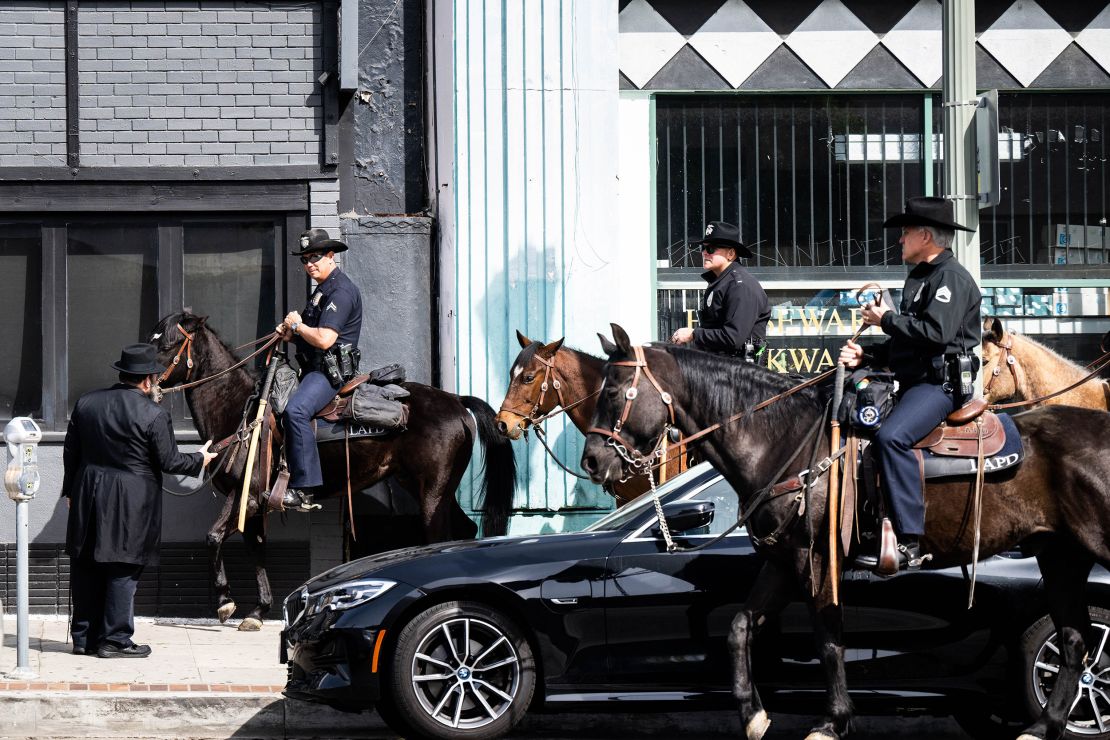Antisemitic incidents in the US reached their highest level last year since the Anti-Defamation League (ADL), a civil rights non-governmental organization, began recording them in 1979.
The incidents including assault, vandalism and harassment increased by more than a third in just one year and reached nearly 3,700 cases in 2022, a new ADL report published Thursday found.
And the upward trend is alarming.
Last October, a former student killed a University of Arizona professor who he believed to be Jewish, according to the ADL report. This February, a man was charged with two hate crimes after he allegedly shot two people who were exiting two separate synagogues in Los Angeles.
Earlier this month, Stanford University police launched a hate crime investigation after an antisemitic drawing containing swastikas and an image resembling Adolf Hitler was found on a Jewish student’s dorm room door.
“Despite the rise of antisemitism, there is still a perception in many people’s minds that Jews are not under threat, that they are successful and wealthy, and are not a targeted minority,” Mark Weitzman, scholar of the history of antisemitism and chief operating officer at The World Jewish Restitution Organization, told CNN.
The ADL report, which includes information gathered directly from victims and local community leaders, as well from police statistics, shows an increase across a range of hate-based incidents, from offensive comments to antisemitic slurs written on property, to physical attacks. In 2022, there was a 69% increase in attacks against visibly identifiable Orthodox Jews, the report found.

“The brazenness of these attacks, sometimes in broad daylight, is a huge concern,” Oren Segal, Vice President of the ADL Center on Extremism told CNN.
“The findings of our latest report quantify what a lot of people in the Jewish community have been feeling – that antisemitism seems to be popping up everywhere and often,” Segal said.
American Jews are disproportionately affected by hate crime compared to other religious groups, according to the FBI hate crime figures for 2021. Yet official law enforcement statistics of these incidents are notoriously underreported, experts told CNN. ADL records indicate that the number of anti-Jewish incidents (criminal and not) is more than three times higher countrywide than the FBI records of confirmed hate crimes show, and almost 1.5 times higher in New York City than what official police records reveal.
Every fourth American Jewish adult, Orthodox or not, was targeted in an antisemitic incident ranging from physical attacks to remarks in person or online, a separate survey by the American Jewish Committee (AJC) published in February found.
The AJC survey found that while both Jewish Americans and the general public see antisemitism as a problem, less than half of the general population think antisemitism has increased at least to some extent in the past five years, compared to about four in five Jewish Americans.
“While the American Jewish community is very aware of rising anti-Jewish sentiment, the general American public is not,” said Robert Williams, a historian and executive director of the USC Shoah Foundation Institute for Visual History and Education at the University of Southern California, who was also not involved in the ADL report.
“Non-Jewish populations in the United States haven’t quite come to that point of making the realization that they also need to stand up against antisemitism, that antisemitism is not just a Jewish problem, but it’s a collective problem – it’s a threat to national security, and it’s a threat to our democracy,” Williams said.
Segal sees today’s situation as an opportunity for American people to come together and reject the hatred.
“When a synagogue is firebombed, or somebody in the community is being attacked or harassed, it is important for others in that community, no matter what their religion or ethnicity, to say ‘this does not represent us’,” Segal said.



